While introducing our latest RWM webinar with Re-Gen and SortFlow, circularity expert Dr David Greenfield outlined the evolution of waste streams:
In 1892, over 80% of household waste was ash. Victorians often burnt objects at home before anything was collected. Since then, the introduction of new materials and waste management practices have meant that waste streams are far less consistent.
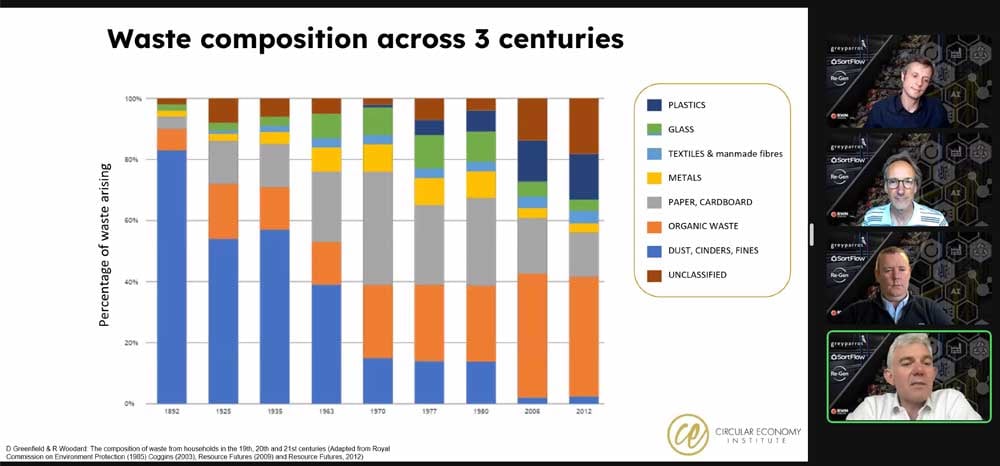
Recovery facilities have struggled to automate processes in response. Many core operations like sampling, product purity assessments and machinery adjustments are still manual. Operational complexity hasn’t mirrored increasingly complex waste composition — until now.
RWM’s webinar was a chance to hear from the people using AI to bring recovery technology up to speed. Experts from Re-Gen and SortFlow shared how they use AI waste analytics to optimise sorting processes, automatically track product quality and value, and transform the way plant operators understand their operations.
As Re-Gen’s Chief Information Officer Conor Mc Cooey put it, arming waste professionals with accurate facility data is the difference between being "driving instructors, rather than chauffeurs".
Engineering progress
Waste management companies like Re-Gen thrive at the frontier of new technology. Conor says they’ve managed to scale one facility to over 200,000 yearly tonnes of recovered material thanks to an “engineering mindset”, and a willingness to try promising new solutions:
Being slightly ahead of the curve is the place to be. If something doesn’t happen with you, it happens to you.
Everybody is very excited about the possibilities of AI, and turning them into actual, actionable decision points — giving people data that will help them do something differently, sell something better, or perform better.”
Re-Gen have already actioned that data for themselves. Early trials on a paper quality control belt revealed just how much continuous monitoring could impact performance:
It allows us to analyse how well pickers are performing, tells us how well our optical sorters and other processes are doing, and gives us continuous quality control on the material that eventually ends up baled and sent to customers.
We’re arming our plant managers with that information. They can set thresholds or alerts, or study the dashboard and say ‘there’s maybe too much hard plastic arriving on this line.’ That allows them to go back and make adjustments.”
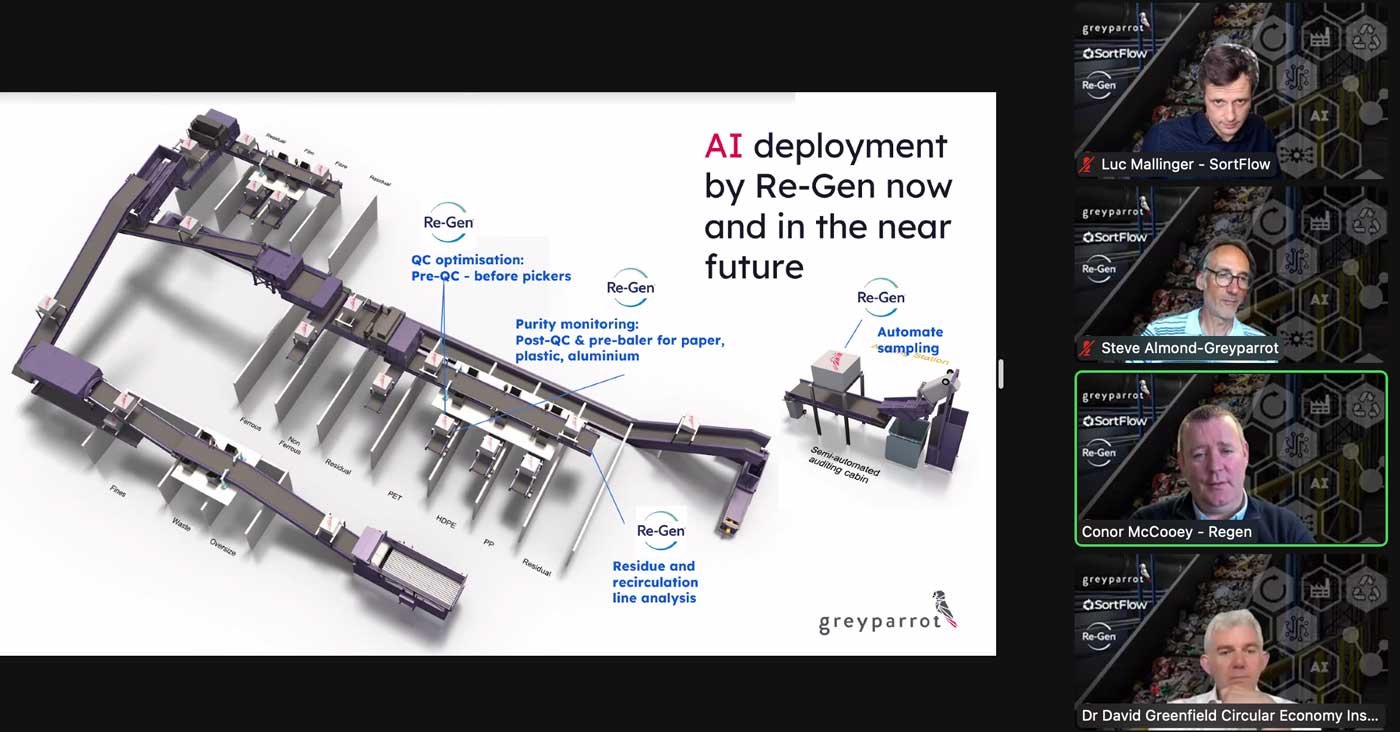
Opening sorting’s “black box”
Re-Gen’s plant managers have access to data that their peers are looking for, too. The MRF operators that speak to SortFlow’s CEO, Luc Mallinger, describe a common performance hurdle:
We hear from a lot of operators that their process is a bit of a black box. They understand what goes in and what comes out, but things like equipment performance, variability in throughput and composition are very difficult to track.
The issue is if you don’t know how your process performs over time, how can you optimise it? How do you know when you have performance or quality issues?”
Like Re-Gen, SortFlow believed in experimenting with AI — and it soon became a necessity for their AI Mapper system. When building the waste sector’s first “digital twin” (a digital model of a live recovery facility and its sorting performance), they looked to data from optical sorters, and found they needed more information:
To build a digital twin we needed good data, and a lot of it. We looked at what was available - which was the data from optical sorters. That’s great, but it doesn’t show us what comes out of the sorting process.
We needed something to complement that data, and AI vision technology was the obvious choice. It’s accessible and flexible, and it’s easy to install into an existing plant. If we want to monitor certain outputs, we can install them pretty much anywhere.”
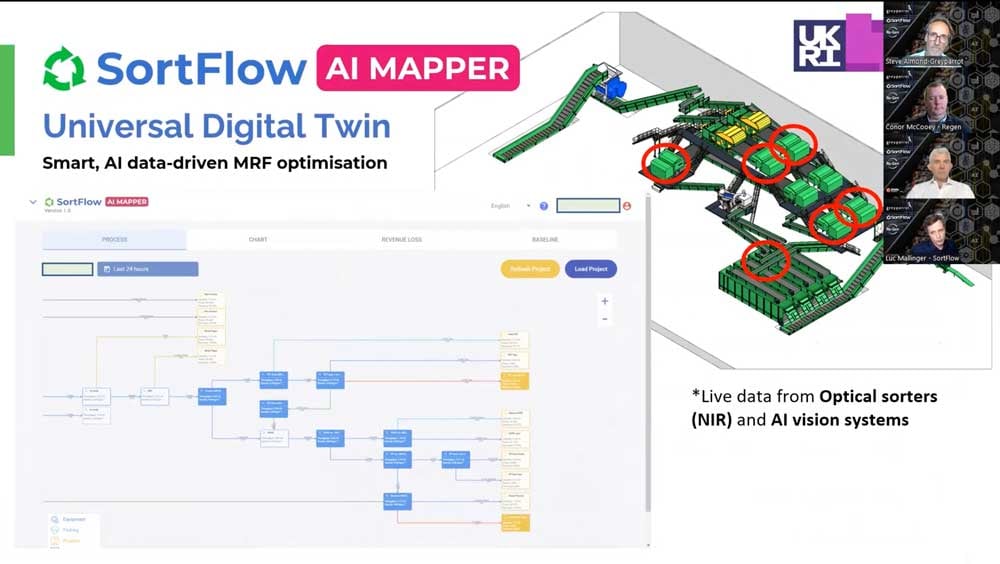
Collaboration, in the facility and beyond
At the beginning of the discussion, Dr Greenfield stressed the need for collaboration in the effort to achieve circularity:
One of the key elements of the circular economy is sharing and collaboration…bringing the whole sector together and getting the systems in place to ensure that we have that interconnectivity is absolutely critical.”
When put in the hands of experienced facility operators, specialist technology like AI waste analytics can transform both individual businesses, and the wider waste trade. Our Head of Partnerships Steve Almond flagged the importance of tracking product purity:
Even when it comes to material that’s been spot sampled — there’s contamination that shouldn’t be there. The whole thing is then returned with massive fines.”
For Re-Gen, quality assurance from reliable AI comes with an added reputation boost:
The accuracy is a massive help for us because we’re trading on our name, and on our brand. We can all stand by our quality stamps. If we couldn’t, our business development team wouldn’t be able to sell our product. Customers are open to buying from us because our quality is so consistent.”
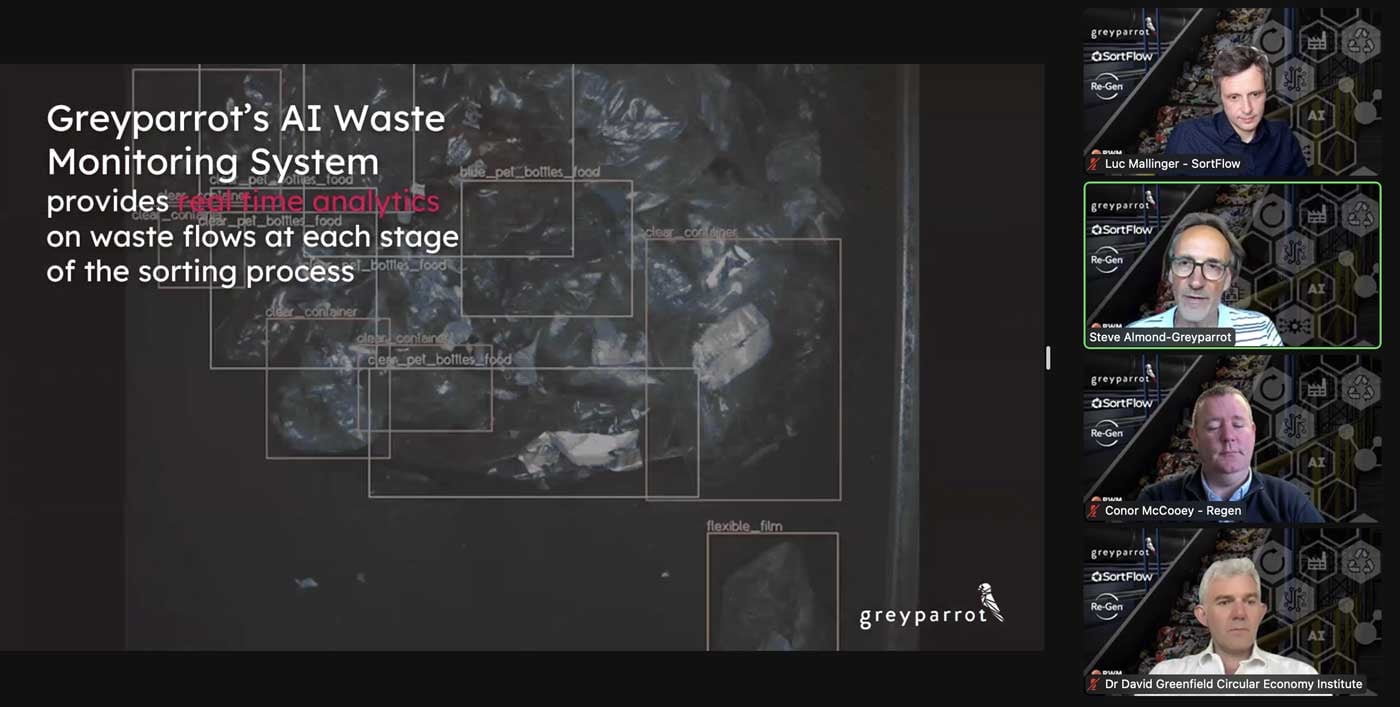
Waste management’s new revolution
AI represents a paradigm shift for recovery facility operations — Dr Greenfield describing this moment as “the cusp of a new revolution in MRF technology”. It’s exciting, but it comes with its own hurdles. Luc is hopeful for its future, and the potential that’s on the horizon:
There are a lot of developments being made by applying AI to sorting. We’ve only seen the start of it. On the data side - there’s a lot more that’s possible. I really hope that as the industry goes forward this is something on everyone’s mind.”
For Steve, who experienced the early resistance and eventual adoption of optical sorters, Dr Greenfield’s point about collaboration was a key takeaway, and the way forward for AI adoption:
I remember starting in optical sorting 17 years ago. Everyone said it was too expensive. As soon as all of the stakeholders involved began working together more closely, it became an integral part of every single plant.”
Conor sees similar potential in effective communication, especially through change management:
We have to focus on change management, particularly with operations staff who are really skilled at their jobs. That initial skepticism and resistance is there, but we find that once we get past that, they start to think about things we never thought of. They’re the best people to come up with use-cases.
Once you get past initial blockers, it’ll explode.”

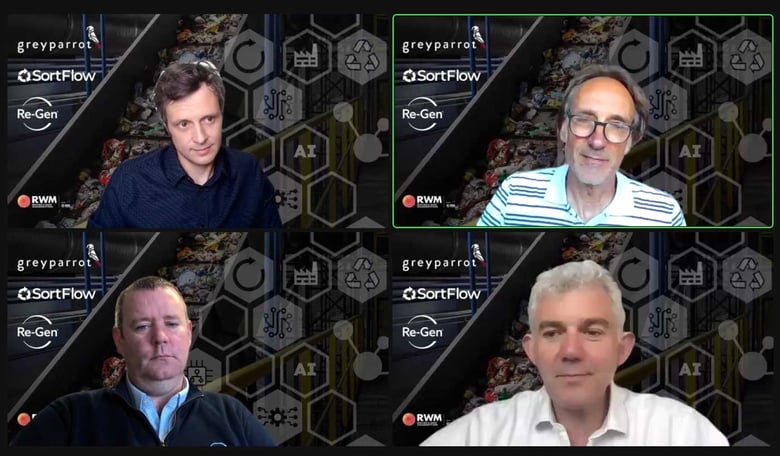
.png?width=501&height=285&name=cover-2%20(1).png)

